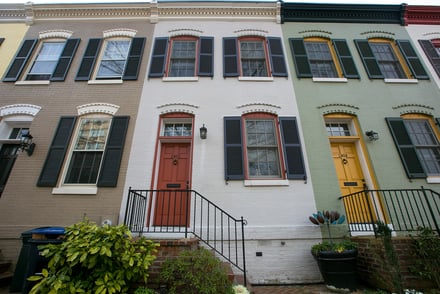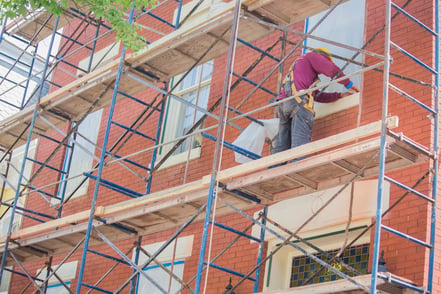Historic brick homes were often built with matching brick stairs and walkways leading to the door. Original brick steps require the same care as the building itself and, in some cases, even more scrutiny. When is it time for repairing old brick steps?
Your historic brick steps are subject to heavy foot traffic, harsh weather in all seasons, and accumulated dirt and debris. Such build-up leaves them vulnerable to cracks, water damage, crumbling, and loose brick. Not only is this a safety hazard for you and your guests, but the problems can also quickly accelerate, causing irreversible damage. If you have not inspected them lately, you may discover it is time to repair your steps.
What to Look for When Inspecting Your Steps
While loose bricks are a sure sign your historic steps need repair, homeowners may easily miss smaller signs. First, look for cracks and chips in the mortar. While they may seem insignificant, they can lead to severe problems. When water and dirt penetrate those slight imperfections, the cracks can enlarge, and damage will compound, creating visible gaps, which are a sure sign the structural integrity of your stairs is in danger.
Check the slope of your stairs. Ensure that the tread is even and there are no tripping hazards. If the stairs are leaning or tilted, you may end up with pooling water, which can infiltrate the mortar and cause significant damage.
Heading into the cooler weather, inspecting your steps makes good economic sense. Moreover, solving problems now will prevent them from becoming major structural and aesthetic problems in the spring.
The Best Time to Repair Your Steps
Regular inspections and correction of minor imperfections by a historic brick specialist is the gold standard of historic brick care. The next best time to fix stairs is as soon as you see signs of trouble. You must correct brick-and-mortar damage in your steps before winter. The freeze-thaw cycle of the cold months will accelerate deterioration, and ice expanding between joints can loosen, crack or destroy the brick itself.
Repairing historic brick is not a do-it-yourself job. Combining 21st-century materials with those of the original construction can worsen things. Specialized tradespersons who utilize traditional methods and materials can safely repair your historic brick stairs and ensure their beauty lasts for years.
Specialists in Historic Brick Restoration
Even if your brick is damaged, specialists can often save the original brick. They can also source similar bricks to maintain your home's aesthetic appearance and inherent value. If previous repairs have caused additional problems, a knowledgeable contractor can replace faulty materials with proper lime-based mortar.
Beautiful, well-maintained brick steps provide exceptional curb appeal and show pride of ownership. With regular inspections and routine repairs of small imperfections, you can avoid costly repairs down the road.
At Renaissance Development, we specialize in historic brick restoration. If your steps need repair, contact us today.
10/10/22 11:03 AM

